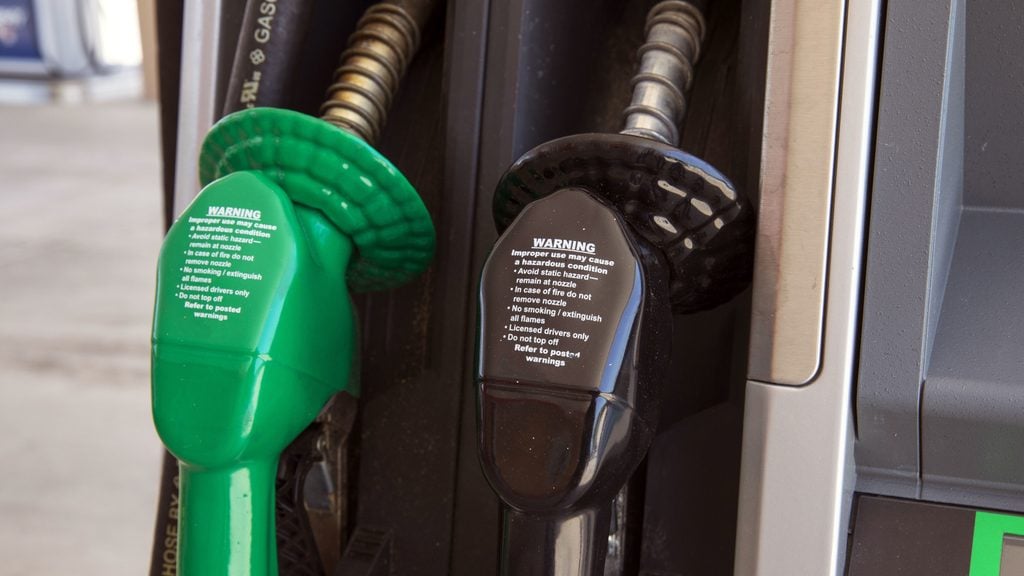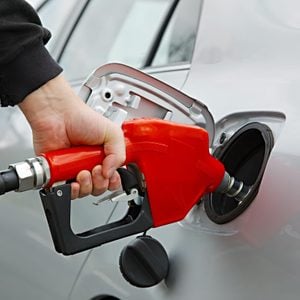Diesel vs. Gasoline: What’s the Difference?
Updated: Apr. 24, 2021

Increase your IQ at the pump—and make sure you're choosing the right fuel for your car.
In 2018, U.S. drivers purchased 142.86 billion gallons of what the U.S. Energy Information Administration (EIA) categorizes as finished motor gasoline (the fuel most of us use when we fill up our car’s tank). That equals about 391.40 million gallons consumed each day. Considering how often we find ourselves at the pump to purchase the stuff, how much do you really know about gasoline? And what’s the deal with that other stuff on tap—diesel? Let’s break it down.
What is gasoline?
Made from crude oil—which is, essentially, unrefined petroleum—along with other forms of petroleum, gasoline is the fuel our vehicles need to get us from Point A to Point B. Petroleum refineries and blending facilities produce this gas for fuel pumps. According to the EIA, a lot of what is made in these plants is unfinished, which means the liquid then needs to be blended with other materials to create the finished motor gasoline that meets what is required for use in spark-ignition engines—the end product that we pump into our cars. By the way, this is why you need to touch your car before pumping gas.
There’s variety at the pump
At a standard gas station, customers are likely to find three main grades of gas: regular (unleaded), midgrade (super), and premium (super premium). The difference between these grades, aside from their price, is their individual octane ratings. Exxon and Mobil’s website defines the octane rating as “a measure of a fuel’s ability to resist ‘knock.'” Basically, fuel with a higher octane rating is expected to produce a smoother ignition. With that, higher octane also means a higher price tag per gallon.
What is diesel?
Like gasoline, diesel is also fuel, but instead of powering up conventional cars, it is typically used in trucks and boats, according to Kelley Blue Book. It is made up of a blend of crude oil (there’s that unrefined petroleum again). So far it sounds pretty similar to gasoline, right? Here’s where the two part ways: Diesel burns differently than its gas pump counterpart. For diesel to do its job, a different type of engine is needed (hence the reason why it works so well with big rigs, boats, and such). Diesel engines utilize compressed air for their ignition, unlike the spark ignitions of a standard automotive. Here’s what happens when you put diesel in a gas car.
One more thing about diesel
Just as there are different grades of gasoline, now diesel has an alternative, biodiesel—and it’s more environmentally friendly. According to Kelley Blue Book, the traditional fare is fossil-fuel-based, while biodiesel is comprised of a vegetable-oil derivative. It’s more of a clean-burning solution and can dissolve dirt and debris found in fuel lines.
Choosing the best fuel
Whether or not you want to splurge on the higher octane stuff or stick with regular unleaded likely depends on what type of car you drive. According to Sun Auto Service, unleaded is best used with engines that have a low compression ratio because it burns quicker. If an engine has turbocharging or high compression ratios because the ignition is higher resistance, then you’re going to want to shell out a few extra bucks for premium. Ultimately, you should consult both your vehicle’s manual and a trusted mechanic to make the best choice. Whatever you decide, try to steer clear of these gas pumping mistakes.

